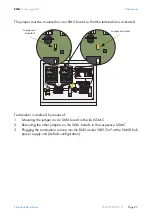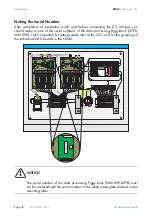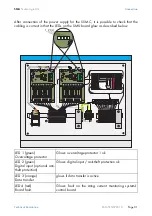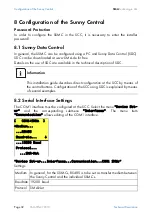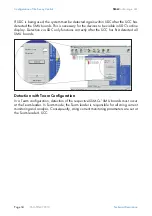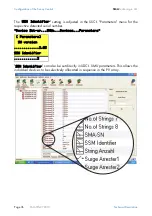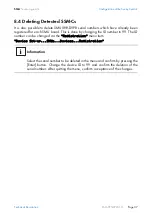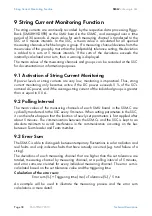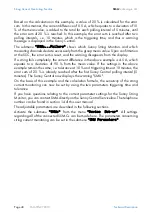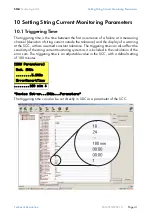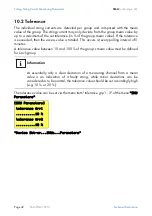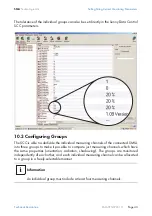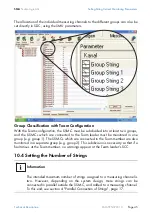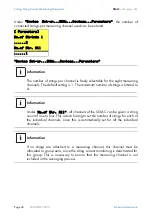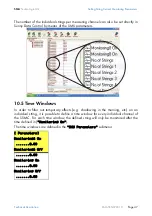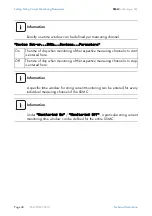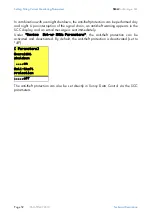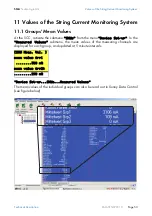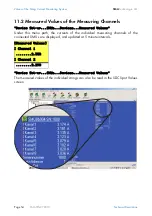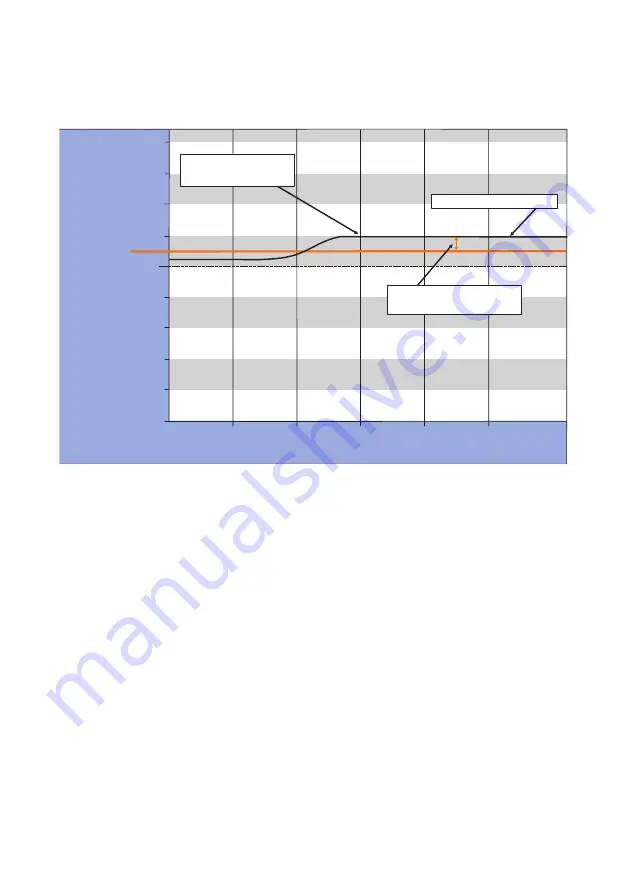
SMA
Technologie AG
String Current Monitoring Function
Technical Description
SSM-TEN072310
Page 39
The dependence of the error sum on the tolerance setting and the triggering time is
illustrated in the figure below.
When setting the parameters for the two values of triggering time and tolerance, you
should assume a static mean value. The main point to consider is after what time a
predefined deviation of a measuring channel from the group mean value should be
recognized.
Example:
It is assumed that at t0 the mean value of a group is 5 A. All string currents are now
compared to this mean value. If no string current lies outside the set tolerance of (e.g.)
10 % (i.e. 5.5 A), totaling is not performed.
If, however, a string shows a string current of 6 A, then the difference between the
actual string current (6 A) and the tolerance limit (5.5 A) is added to the total. The
difference is thus 0.5 A, which is a deviation of 10 % from the mean value. This
difference of 10 % is now added to the total until the error sum is reached. Assuming
that the string current lies at 6 A for a longer period of time, and the triggering time is
set to 10 minutes, then the error sum can be calculated as follows:
Error sum (%) = Triggering time x Tolerance (%) / Polling interval
Error sum
= 10 min x 10 % / 5 min
= 20 %
5
0
10
15
20
25
5 A
Tolerance limit
at 10 % = 5.5 A
Cycle time [min]
Mean current value [A]
Totaling begins since the
tolerance limit has been
exceeded
The difference, which is totaled
until the fault limit is reached
Actual string current = 6 A



